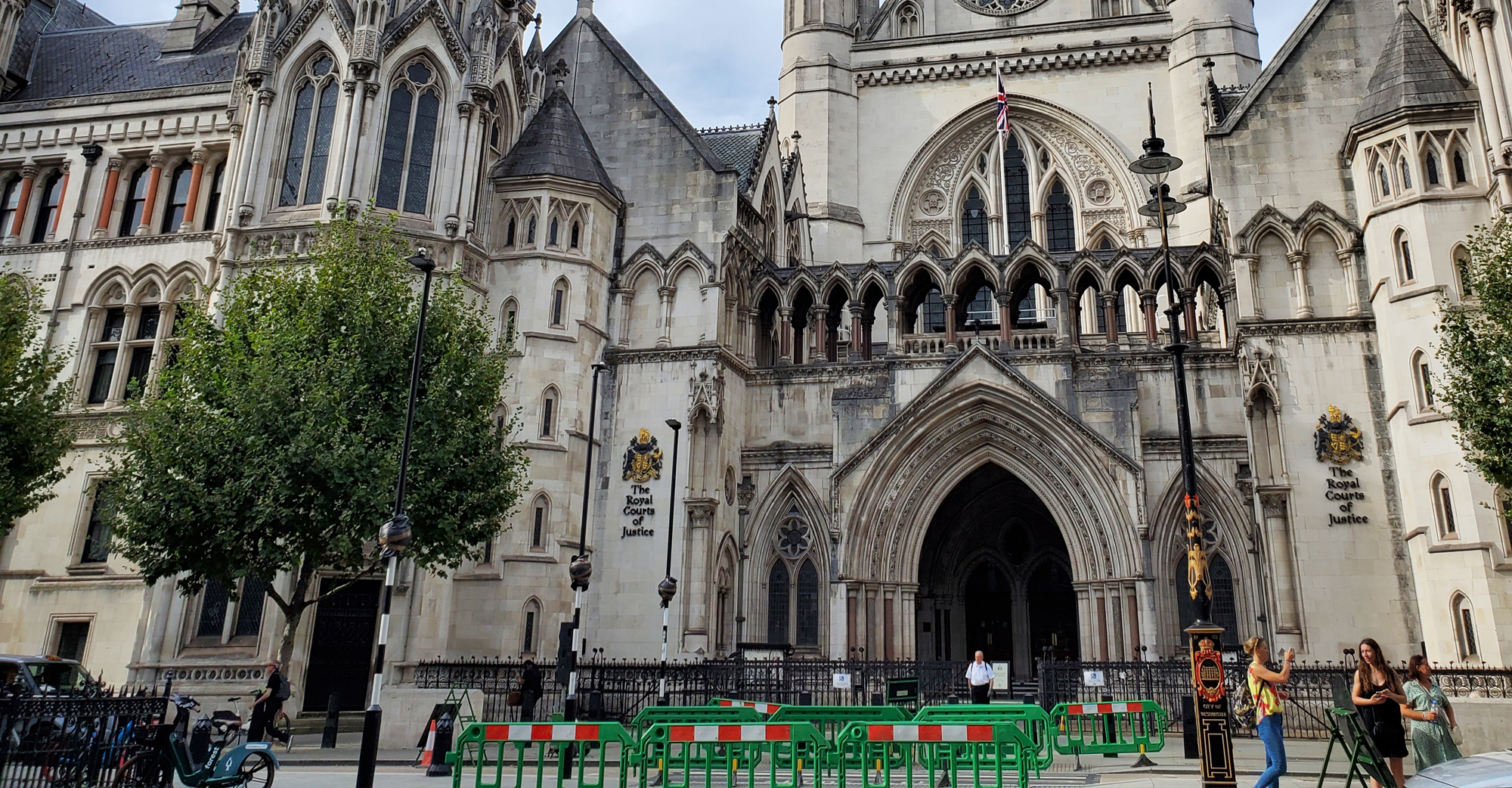World Trivia 1
Come on and play Traveling Boy’s Trivia Game. Only you will see the results.
World Trivia 1

Question 1 |
A | Brazil |
B | China |
C | India |
D | Nigeria |
E | Papua New Guinea |
Answer: E. Papua New Guinea

Despite a population of just 8.8 million, Papua New Guinea comes in first with a total of 840 languages spoken across the country. To put things into perspective, that’s almost 12% of the world’s languages spoken in an area that’s roughly the size of California. – Visual Capitalist
Why does Papua New Guinea have so many languages?
Since the communities were isolated from one another by mountains and forests, each of them developed their own language and contributed to Papua New Guinea becoming the world’s most linguistically diverse country. - World Atlas
Question 2 |
A | China |
B | France |
C | India |
D | Italy |
E | Mexico |
Answer: D. Italy
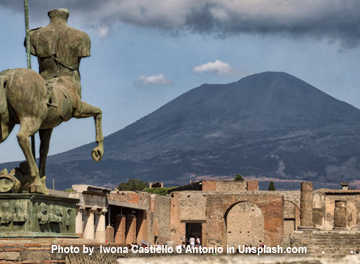
The country with the most UNESCO World Heritage Sites is Italy This seat of the Roman Empire has dramatic and nearly continuous Mediterranean coastlines everywhere save for its northern reaches, where the European Alps instead soar into the frame. Is it any wonder that such a place would have so many treasures? Of the 59 sites inscribed on the World Heritage List, 53 are cultural, and six are natural. Some of the standouts include the Archeological Areas of Pompei, Herculaneum, and Torre Annuziata, the Historic Center of Rome, the CostieraAmalfitana, aka the Amalfi Coast (all of which fall into the cultural category), as well as the Dolomites (natural)—a dramatic subrange of the Alps. - World Atlas
- Italy: 59
- China: 57
- France: 52
- India: 42
- Mexico 35
Question 3 |
A | China |
B | North Korea |
C | Russia |
D | South Korea |
E | United States |
Answer A: China
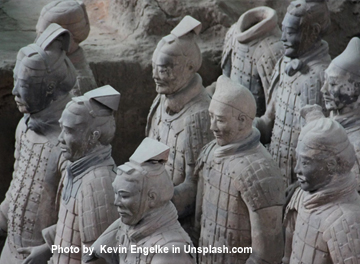
China currently maintains the largest army in the world, commanded by a single country, with 2.18 active military personnel. India, the United States, and Russia each maintain 1.45 million, 1.33 million, and 1.32 million active military personnel, respectively. Additionally, NATO operates with an estimated force of 3.5 million active personnel, but because it is the result of an alliance between 31 countries, it cannot be considered a single army.
Question 4 |
A | Siberia |
B | Antarctica |
Answer: Antarctica
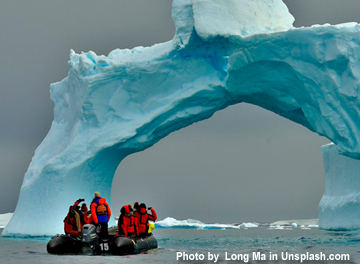
Before booking a ticket to a gulag in Siberia, you might consider a trip to a research station in Antarctica, whose minimum temperature is -93 C.
In Siberia, with the minimum of 72 С., people live, work, give birth and raise children. There may be places in Siberia that are colder than coastal Antarctica due to much higher altitude and continentality. However, Antarctica overall, is located at much higher latitude, higher altitude than Siberia, gets lesser intensity of sunlight with relatively clearer sky that makes the outward radiation escape. The permanent ice cover in Antarctica has higher albedo (ratio of insolation reflected to the total insolation received). Siberia, on other hand lies at lower latitude compared to Antarctica. The temperate cyclonic circulation at these latitudes causes cloud cover that reflects back the outward radiation that keeps it warmer than Antarctica.
Question 5 |
A | China |
B | Egypt |
C | Greece |
D | India |
E | Iran |
Answer: E. Iran
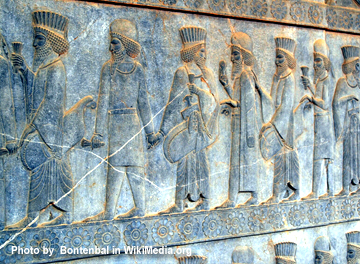
Here are the countries World Population Review lists as the oldest in the world by date:
- Iran - 3200 BCE.
- Egypt - 3100 BCE.
- Vietnam - 2879 BCE.
- Armenia - 2492 BCE.
- North Korea - 2333 BCE.
- China - 2070 BCE.
- India - 2000 BCE.
- Georgia - 1300 BCE.
Italy Trivia
Come on and play Traveling Boy’s Trivia Game. Only you will see the results.
How much do you know about the unification of Italy?
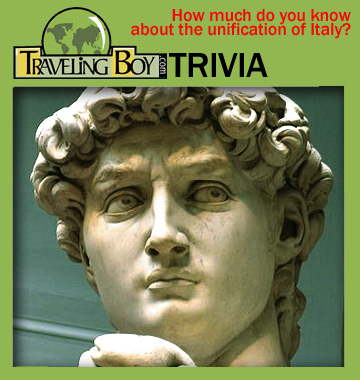
Congratulations - you have completed How much do you know about the unification of Italy?.
You scored %%SCORE%% out of %%TOTAL%%.
Your performance has been rated as %%RATING%%
Question 1 |
A | Julius Caesar |
B | Charlemagne |
C | Victor Emmanuel II |
D | Giuseppe Garibaldi |
E | Odoacer |
Answer: Victor Emmanuel II
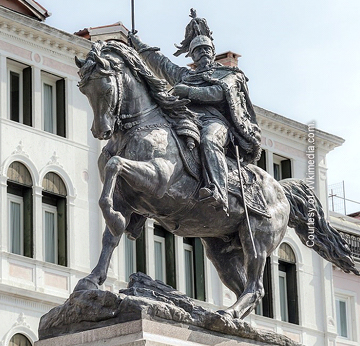
VICTOR EMMANUEL II (1820-1878) was the first king of united Italy (1861-1878). He was also the last king of Piedmont-Sardinia (1849-1861)
JULIUS CAESAR was a Roman general and statesman subsequently became dictator from 49 BC until his assassination in 44 BC..
Charlemagne, former Holy Roman emperor.
Giuseppe Maria Garibaldi was an Italian general, patriot, revolutionary who contributed to Italian unification.
Odoacer was a barbarian soldier and statesman from the Middle Danube.
Question 2 |
A | The Conformist |
B | L'Eclisse |
C | Fellini's Roma |
D | The Leopard |
E | Paisan |
Answer: The Leopard
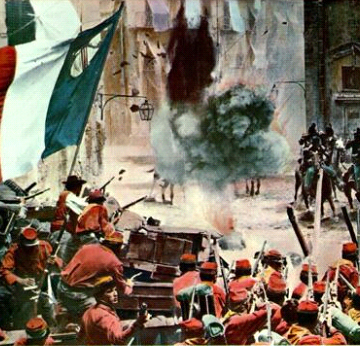
The Leopard (Il Gattopardo) is a 1963 epic historical drama film directed by Luchino Visconti.
Burt Lancaster stars as an aging Sicilian nobleman caught up in the sociopolitical turmoil of the Risorgimento (Italian unification) during the mid-19th century, with Alain Delon as his opportunistic nephew, and Claudia Cardinale as his goddaughter
Question 3 |
A | Liguria |
B | Lombardy |
C | Piedmont |
D | Sicily |
E | Tuscany |
ANSWER: Tuscany
During the 14th century, the Tuscan dialect began to predominate because of the central position of Tuscany in Italy, and because of the economic power of its most important city, Florence. It was not until the 19th century, however, that the language spoken by educated Florentines spread to become the standard language of a newly unified Italy. With progressive increases in literacy, standard Italian became gradually accepted as the national language in the 1950s.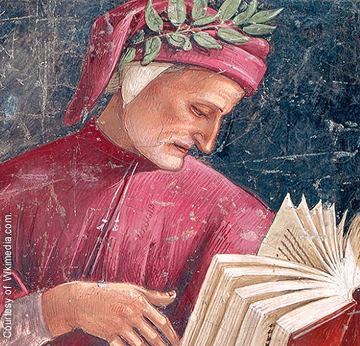
Dante Alighieri (1265, Florence — 1321, Ravenna), Italian poet, prose writer, literary theorist, moral philosopher, and political thinker. He is best known for the monumental epic poem, La commedia, later named La divina commedia (The Divine Comedy_ (The Divine Comedy).
Dante Alighieri is considered “the progenitor of the modern [Italian] vocabulary”; in reference to the work of linguist Tullio De Mauro, it is claimed that at the beginning of 1300s, 60% of the essential vocabulary of Italian—“the two thousand words without which we couldn’t manage in today’s everyday life”—had already been part of the language. But by the end of that century, Dante left us with the lexicon that already included 90% of the essential vocabulary of the modern language. The opening lines of the Divine Comedy, “Nel mezzo del cammin di nostra vita / mi ritrovai per una selva oscura”, are comprehensible to modern Italian readers.
Italian grammar is Latin-based and, therefore, shares most of its basic features with other Romance languages such as French, Spanish, and Portuguese.
Question 4 |
A | The Accordion |
B | The Guitar |
C | The Piano |
D | The Trumpet |
E | The Violin |
The Trumpet
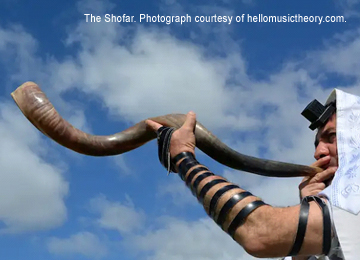
The Shofar. Photograph courtesy of hellomusictheory.com.
Perhaps we call trumpets horns to this day because the first recorded trumpet-like instruments were actually animal horns. These horns have a rich history dating back longer than many nations and cultures and have been used throughout history for a number of different purposes.
Hollowed out and open at either end, the Shofar was a ram’s horn that is played with a technique much like that of a modern trumpeter.
Originally, they would have been used in Jewish religious ceremonies such as Rosh Hoshanah and Yom Kippur. They were played like a trumpet without valves where the player changes the pitch of the note by changing their embouchure. As well as the shofar, other early trumpet ancestors included the Lur and the cow horn.
INSTRUMENTS FROM ITALY:
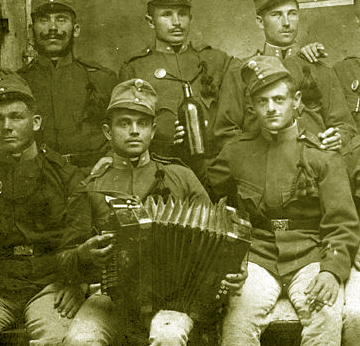
Photograph courtesy of Wikimedia Commons.
The ACCORDION was an instrument in the popular and folk-dance Italian tradition. It was born in Italy, from schools craft Castelfidardo, Ancona, Pavia. Its use is massive in the folk and popular tradition, with the Neapolitan tarantella, and the pinch (pizzica) in Puglia, who recently had a big comeback. He was born originally as an instrument for sacred music to accompany the singing during the processions, in contrast to its closest relative, the “concertina”, considered a more popular instrument.

Photograph courtesy of Wikimedia Commons.
The history of the GUITAR has its origins in Italy, where, following the schools of classical lutes, brought to the birth of different regional schools, which continue today with different styles and techniques. A typical Italian guitar is the guitar swing, typical of the tradition of Calabria, Puglia, Basilicata, Abruzzo, Molise and of Campania, which we find in the center and south of Italy since the fourteenth century, with ever-evolving forms compared to the presumed model of the historic baroque guitar. Today is also known as Italian guitar as opposed to the “classical” guitar called as Spanish or French guitar. A distinguishing feature of this old guitar is its shaped like an elongated eight.

Pianoforte (Piano). Photograph courtesy of hellomusictheory.com The name of this instrument, the PianoForte or as it’s now known the PIANO, gives a clue as to why there was pressure to invent the modern piano.
“Piano” means soft in Italian, and “forte” means loud. This name made the new keyboard instrument “soft-loud.” The original title was “gravicembalo col piano, e forte” (harpsichord with soft and loud), and later shortened to pianoforte.
The inventor of this new keyboard instrument, whose name they would eventually shorten to the piano, was Bartolomeo Cristofori of Northern Italy.
Cristofori invented the hammer mechanism that allowed the pianoforte to play loud and soft depending on how hard you pressed the keys.
He also redesigned the soundboard for thicker strings and higher tension—another feature that allowed the instrument to play louder.
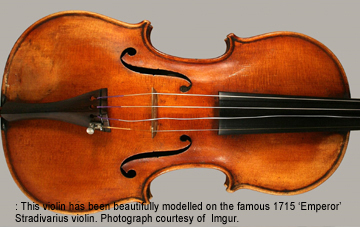
This violin has been beautifully modelled on the famous 1715 ‘Emperor’ Stradivarius violin. Photograph courtesy of Imgur.
The oldest sources regarding VIOLIN enable us to trace its birth at the beginning of the sixteenth century.
Made famous by the Italian names of Stradivari, Amati and Guarneri related to this important instrument which becomes essential for the birth of Opera in Italy, at the same time with music opera and central Europe symphonic art.
Question 5 |
A | White beans and crostini |
B | Cotoletta alla Milanese & Ossobuco |
C | Pesto & Foccacia |
D | Pizza & San Marzano Tomatoes |
E | Prosciutto & Tagliatelle al Ragu |
Answer: Pesto & Foccacia

For one cup of Pesto alla Genovese
⦁ 1/2 cup walnuts
⦁ 1/2 cup sweet basil
⦁ 2 teaspoons garlic
⦁ 1/4 cup Romano Cheese
⦁ 1/4 cup Parmesan Cheese
⦁ 6 tablespoons butter
⦁ 1/2 cup extra virgin olive oil
⦁ 1/4 teaspoon salt
⦁ 1/8 teaspoon black pepper
⦁ ½ cup of cream
⦁ White Beans & Crostini: Tuscany
⦁ Cotoletta alla milanese & Ossobuco: Lombardy
⦁ Pizza & San Marzano Tomatoes: Campania
⦁ Prosciutto & Tagliatelle al Ragu: Emilia-Romagna
Trivia 61 Flavors of the Vine
Flavors of the Vine
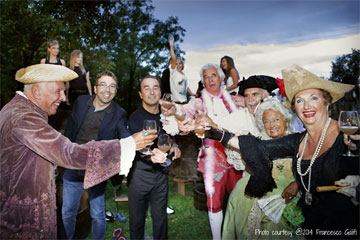
Photo courtesy of Francesco Galifi

Vin, Wein, Vino, вино and ワイン — No matter what you call it, it’s grape harvest north of equator. With that said, Trivia 61 will be devoted to the Flavors of the Vine.
No one will see your answers except for you.

You scored %%SCORE%% out of %%TOTAL%%. Your performance has been rated as %%RATING%%
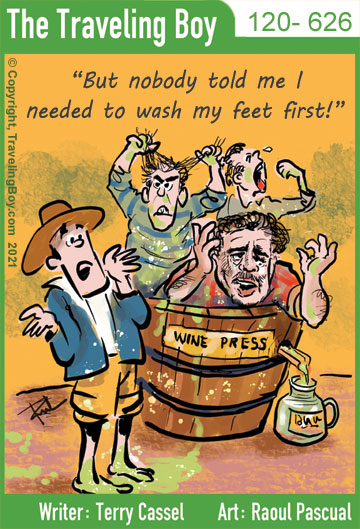 We hope you had fun!
We hope you had fun! Question 1 |
True or False?
Terroir (French from terre, "land") is a term used to describe the environmental factors of the grape.

A | True |
B | False |
The answer is: True
In the context of wine production, terroir is a concept that encompasses the varieties of grapes used, elevation and shape of the vineyard, type and chemistry of soil, climate and seasonal conditions, and the local yeast cultures.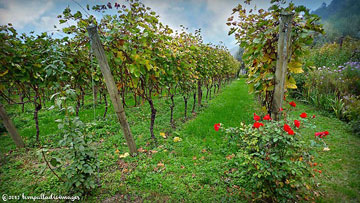
The range of possible combinations of these factors can result in great differences among wines, influencing the fermentation, finishing, and aging processes as well. Many wineries use growing and production methods that preserve or accentuate the aroma and taste influences of their unique terroir. However, flavor differences are less desirable for producers of mass-market table wine or other cheaper wines, where consistency takes precedence. Such producers try to minimize differences in sources of grapes through production techniques such as micro-oxygenation, tannin filtration, cross-flow filtration, thin-film evaporation, and spinning cones.
Question 2 |
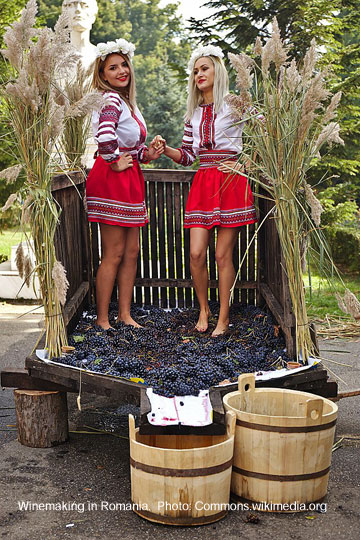
A | China |
B | France |
C | Germany |
D | Italy |
E | Switzerland |
Answer: D. Italy
Top Ten Wine-Producing Nations in 2020:
- Italy
- France
- Spain
- United States
- Argentina
- Australia
- South Africa
- Chile
- Germany
- China
Source: 2020 Wine Production
Question 3 |
True or False?
The sweetness of wine is determined by the amount of residual sugar in the wine after fermentation, relative to the acidity.
A | True |
B | False |
Answer: True
Wines contain many chemical compounds similar or identical to those in fruits, vegetables, and spices. The sweetness of wine is determined by the amount of residual sugar in the wine after fermentation, relative to the acidity present in the wine. Dry wine, for example, has only a small amount of residual sugar. Some wine labels suggest opening the bottle and letting the wine "breathe" for a couple of hours before serving, while others recommend drinking it immediately. Decanting (the act of pouring a wine into a special container just for breathing) is a controversial subject among wine enthusiasts. In addition to aeration, decanting with a filter allows the removal of bitter sediments that may have formed in the wine. Sediment is more common in older bottles, but aeration may benefit younger winesQuestion 4 |
True or False?
Viking expeditions of Vinland recorded the first grape vines found in the New World.
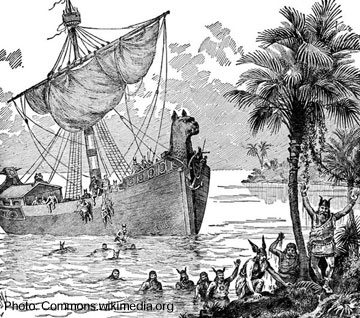
A | True |
B | False |
Answer: True
Viking expeditions of Vinland recorded the first grape vines found in the New World. Vinland, Vineland or Winland (Old Norse: Vínland) was an area of coastal North America explored by Leif Erikson around 1000 CE, nearly five centuries before the voyages of Christopher Columbus and John Cabot. The name appears in the Vinland Sagas, and presumably describes both Newfoundland and the Gulf of Saint Lawrence as far as northeastern New Brunswick (where the eponymous grapevines are found). Much of the geographical content of the sagas corresponds to present-day knowledge of transatlantic travel and North America.In 1960, archaeological evidence of the only known Norse site in North America (outside Greenland) was found at L'Anse aux Meadows on the northern tip of the island of Newfoundland. Before the discovery of archaeological evidence, Vinland was known only from the sagas and medieval historiography. The 1960 discovery further proved the pre-Columbian Norse exploration of mainland North America. L'Anse aux Meadows has been hypothesized to be the camp Straumfjörð mentioned in the Saga of Erik the Red, who was banished from his Norse homeland (in what is today's Norway) to Iceland, and then banished from Iceland to Greenland; which really was green at the time of his arrival.
Question 5 |
True or False?
Wine is a fundamental component of Mormon laws and traditions.
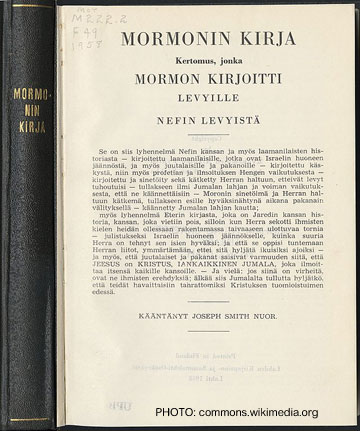
A | True |
B | False |
Answer: False
Wine is an integral part of Jewish laws and traditions. The Kiddush, is a blessing recited over wine or grape juice to sanctify the Shabbat. On Pesach (Passover) during the Seder, is a Rabbinic obligation of adults to drink four cups of wine. In the Tabernacle and in the Temple in Jerusalem, the libation of wine was part of the sacrificial service. Note that this does not mean that wine is a symbol of blood, a common misconception that contributes to the Christian beliefs of the blood libel. It has been one of history's cruel ironies that the blood libel — accusations against Jews using the blood of murdered gentile children for the making of wine and matzot — became the false pretext for numerous pogroms. And due to the danger, those who live in a place where blood libels occur are halachically exempted from using red wine, lest it be seized as "evidence" against them.EXTRAS:
The World’s Most Expensive Wine Ever Sold A 1787 Chateau Lafitte was auctioned at Christie's London auction house, in December 1985 for $156,450* [source: Feiring] and is widely recognized as the most expensive bottle of wine ever sold. Reportedly, many prospective buyers believed that the initials of Thomas Jefferson were etched in the glass bottle. At one time, it was a common practice to engrave initials on bottles when purchasers placed large orders from the Chateau, so this bottle could have been a part of the president's estate, which would be at least one reason behind the hefty price tag.*Purchasing power of $100 in 1985 equals $247.61 today. That works out to about $65,967.27 per 4-ounce glass, give our take a $5,000 drop or so.
The Five S's of Wine Tasting
Wine tasting doesn't have to be intimidating. You’ll find by using the five S's () --- see, swirl, sniff, sip and savor) --- is a humorous way to taste wine responsibly. Easy to remember but not always easy to do especially the last word.
